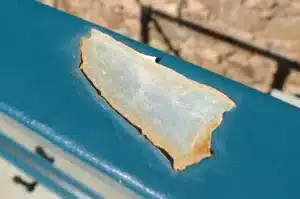Avoiding the pinholes and holidays in coatings
In the world of atmospheric corrosion, steel corrosion (including pinholes and holidays) is a complex electrochemical reaction that occurs when bare steel is in the presence of an electrolyte such as water, oxygen, and chlorides containing airborne pollutants. The accepted theory of corrosion involves the transport of the electrolyte through a protective coating film to the steel substrate, explains Nick Karakasch, the retired principal of Total Corrosion Consultants, Melbourne, Australia.
Coatings are the principal protection materials used for steel exposed to atmospheric conditions, whether the structure is in a refinery, chemical plant, shipping, offshore platform or bridge.
Coating ‘failure’ is best described as the inability to withstand exposure conditions and continue to effectively protect the substrate. The term ‘failure’ also covers the situation when a coating has reached the end of its service life. It is important to differentiate between coating ‘failure’ and coating ‘breakdown’. Identification of whether one is dealing with failure or breakdown is an important factor, so that appropriate remedial measures can be taken.
Pinholes and holidays
This article is not all-inclusive; the intent is to provide a general insight into some of the causes related to coating failures, particularly in relation to pinholes and holidays.
Protective coatings are complex materials made up of many interacting ingredients, with all having a finite service life. In other words, they gradually degrade on atmospheric exposure largely due to chalking, losing the ability to protect the steel.
Chalking can best be described as the formation of a relatively loose organic powder on the surface of a paint coating after exposure to the weather, and in particular to ultraviolet rays. Modern-day coatings are predominately organic materials. As more of the coating is exposed, the quicker will be the tenancy to chalk, which is a continuing process as atmospheric conditions remove the powdery substance, exposing fresh material for the process to continue over time. Chalking has been known to range from a few microns to 20µ per annum.
A coating can only provide protection if it forms a continuous film, free of defects or physical stresses caused by handling, transport and erection. Two major contributors to the corrosion cycle and coating failure are pinholes and holidays.
These aspects are largely dictated by coating type, film thickness, water vapour transition rates and UV resistance. The principal reason for coating failures depends on proper application techniques to eliminate pinholes and holidays. Read more in the latest issue of Protective Coatings Expert

Metallic zinc coatings, especially inorganic zinc silicate materials, are an area requiring special attention as the occurrence of pinholes is highly predicable and common

